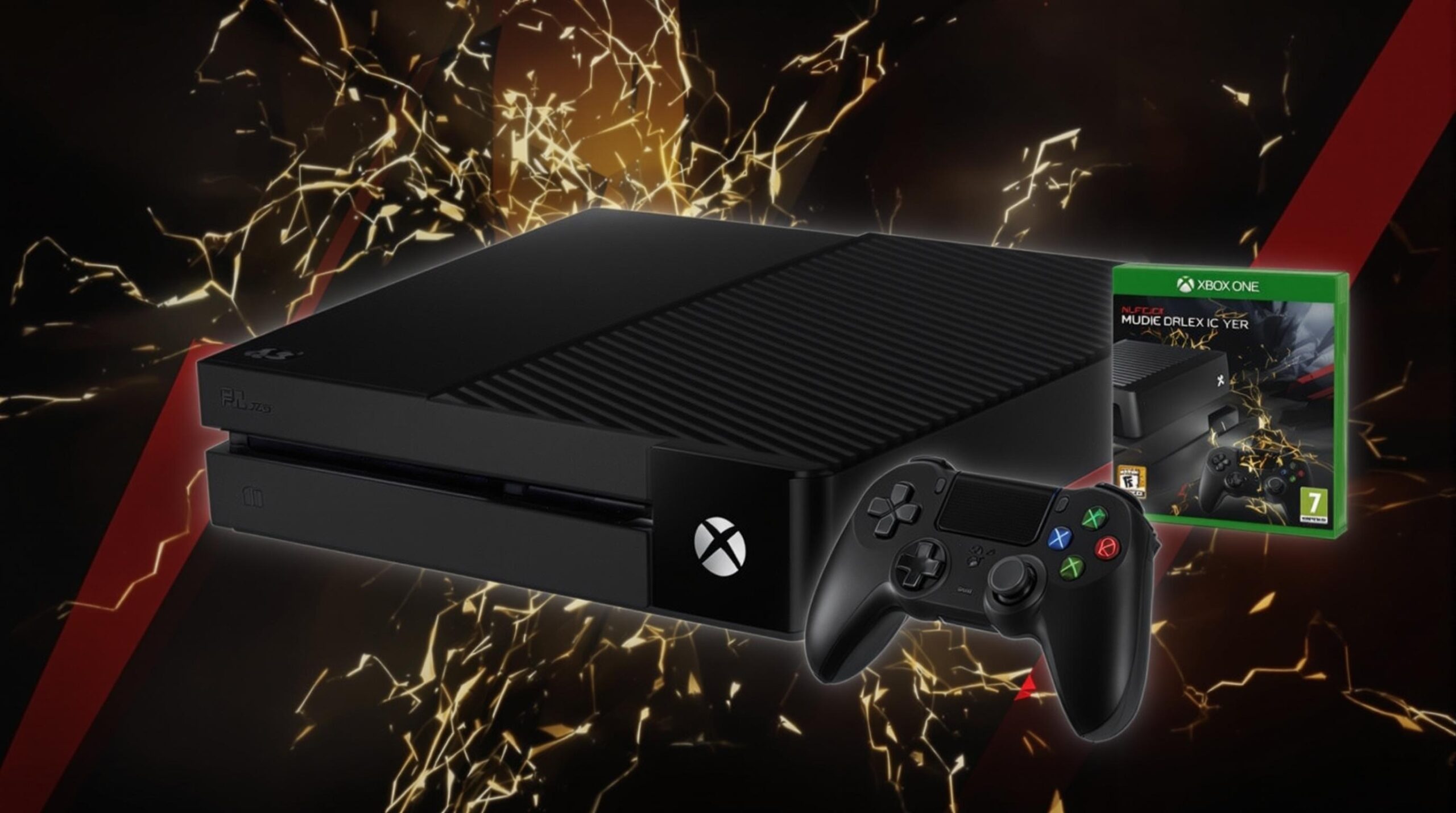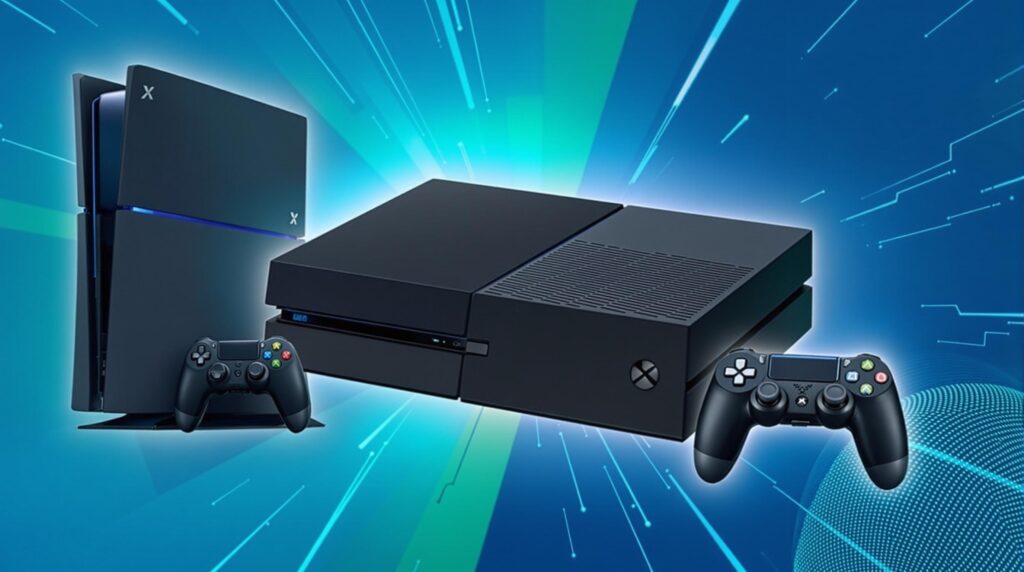The landscape of gaming consoles has transformed dramatically in 2025, with manufacturers pushing technological boundaries to deliver unprecedented performance and immersive experiences. Today’s good gaming consoles offer not just superior graphics and speed but also innovative features like AI upscaling, advanced haptic feedback, and cloud integration that fundamentally change how we interact with digital entertainment.
Key Takeaways
- The PlayStation 5 Pro leads the market with 33.5 TFLOPS of processing power, making it the benchmark for console performance
- Xbox Series X/S offers the best value proposition with Game Pass Ultimate’s 1,500+ game library
- Nintendo Switch 2 perfects the hybrid gaming experience with 4K/60fps docked performance
- Handheld consoles like Steam Deck OLED now deliver PC-quality gaming with impressive battery life
- Specialty and retro consoles create unique gaming niches for specific audiences and nostalgia seekers
The Future of Gaming: 2025’s Most Powerful Consoles
The gaming industry has reached new heights in 2025, with the combined sales of PlayStation 5 and Xbox Series consoles surpassing 93 million units globally. We’ve witnessed a significant transition from previous generation systems to today’s high-performance consoles that leverage cutting-edge technologies like ray tracing, AI upscaling, and cloud gaming.
These advancements haven’t just improved visual fidelity – they’ve transformed how games are played, distributed, and experienced. From the raw processing power of dedicated hardware to the flexibility of cloud-based platforms, today’s gaming landscape offers more choices than ever for players of all preferences and budgets.

PlayStation 5 Pro: The Benchmark for Console Performance
Sony’s PlayStation 5 Pro stands as the undisputed performance champion among traditional consoles. Boasting 33.5 TFLOPS of GPU power via its AMD RDNA 4 architecture, 16GB of lightning-fast GDDR6X RAM, and a 2TB NVMe SSD capable of 10GB/s read speeds, it handily outpaces its closest competitors.
The PS5 Pro’s SSD runs at more than twice the speed of the Xbox Series X (5.5GB/s vs. 2.4GB/s), resulting in virtually eliminated load times for most games. This hardware prowess enables true 8K gaming through Sony’s AI-powered PSSR technology, especially when paired with premium displays like the LG G4 series.
Exclusive titles remain Sony’s strongest asset, with games like Marvel’s Spider-Man 2, Ghost of Tsushima 2, and Horizon Forbidden West: Burning Shores showcasing the system’s technical capabilities. The DualSense Edge controller further enhances immersion with its modular thumbsticks, granular haptic feedback, and adaptive triggers that physically resist player inputs based on in-game actions.
PlayStation Plus Premium subscribers gain access to a library of over 900 games spanning multiple generations, though the service comes at a premium compared to Microsoft’s Game Pass. With 59.3 million units sold globally as of Q1 2025, the PS5 family continues to dominate console market share despite its higher price point.
Xbox Series X/S: The Value Champion
Microsoft’s strategy focuses on accessibility and value rather than raw specs alone. The Xbox Series X delivers 12.1 TFLOPS of GPU power, 16GB of RAM, and a 1TB SSD, while the smaller Series S offers a more modest 4 TFLOPS, 10GB RAM, and 512GB storage at an enticing $299 price point – less than half the cost of a PS5 Pro.
The Xbox ecosystem shines with features like Quick Resume, which keeps up to five games in suspended states for instant switching, and Dolby Vision support for enhanced visual quality on compatible displays. The true differentiator, however, is Xbox Game Pass Ultimate, which provides access to over 1,500 games for a monthly subscription.
Exclusive titles like Starfield: Shattered Space, Forza Motorsport 8, and Fable: The Lost Chapters Remake showcase the platform’s capabilities, while backward compatibility enhancements breathe new life into original Xbox and Xbox 360 classics. For families seeking a versatile family gaming console, the Xbox Series S offers exceptional value without compromising on key features.
With 29.7 million Series X/S units sold according to Microsoft’s Q1 2025 earnings report, Xbox has closed some of the gap with PlayStation while carving out a unique position focused on software and services rather than hardware supremacy.
Nintendo Switch 2: Hybrid Gaming Perfected
Nintendo’s highly anticipated Switch 2 builds upon the success of its predecessor while addressing its technical limitations. Powered by a custom NVIDIA Tegra T239 chip with DLSS 3.5 support, the system delivers 4K/60fps performance when docked while maintaining excellent battery life in handheld mode.
The 8-inch OLED display offers 1080p resolution with vibrant colors and deep blacks, a significant upgrade from the original Switch. Improved Joy-Cons now feature Hall effect sensors to eliminate drift issues, alongside extended battery life of approximately 5 hours for intensive gaming sessions.
Nintendo’s first-party exclusives continue to be the system’s main draw, with The Legend of Zelda: Echoes of the Past, Super Mario Odyssey 2, and Metroid Prime 4 showcasing the hardware’s capabilities while maintaining the company’s family-friendly appeal. DLSS upscaling technology works particularly well with Nintendo’s art styles, enabling higher resolutions without sacrificing performance or battery life.
Building on the original Switch’s staggering 143 million lifetime sales, the Switch 2 launched in November 2024 at $399 and has quickly become the fastest-selling console in Nintendo’s history. Its hybrid nature continues to resonate with players who value flexibility without compromising on gaming experiences.
Handheld Revolution: Steam Deck OLED vs. ROG Ally
Portable PC gaming has matured into a legitimate console alternative, with Valve’s Steam Deck OLED and ASUS’s ROG Ally leading the charge. The Steam Deck OLED features a gorgeous 7.4-inch HDR display with 1,000-nit peak brightness, a 6nm AMD Zen 2 APU, and ample 1TB storage. Its refined design offers up to 8 hours of battery life – a significant improvement over the original model.
With over 14,000 verified Proton-compatible titles including AAA games like Elden Ring and Baldur’s Gate 3, the Steam Deck has established itself as a viable primary gaming device rather than just a supplemental handheld. SteamOS 3.5 provides a console-like interface while preserving PC gaming’s open nature.
The ASUS ROG Ally (2025 model) counters with raw power via its AMD Ryzen Z2 Extreme APU featuring 8-core Zen 4 architecture, a 120Hz 1080p IPS display, and generous 32GB of LPDDR5X RAM. Digital Foundry testing shows it running 18% faster than Steam Deck OLED in demanding titles like Cyberpunk 2077, though at the cost of reduced battery life (5 hours versus Steam Deck’s 8).
These handheld PCs aren’t just smaller versions of gaming laptops – they represent a fundamental shift in how PC games can be experienced, bringing Steam’s vast library and competitive pricing to portable form factors with surprisingly few compromises.
PC Gaming Consoles: Alienware Aurora R16 and MSI Claw
For those seeking the ultimate performance regardless of size or price, console-focused gaming PCs offer uncompromised specifications. The Alienware Aurora R16 exemplifies this approach with its Intel Core i9-14900K processor, NVIDIA RTX 4090 graphics card, and 2TB Gen5 SSD capable of delivering 4K/120fps performance in demanding titles like Alan Wake 2.
At $3,199, the Aurora R16 costs significantly more than traditional consoles but offers customizable hardware, dual-boot functionality between Windows 11 and Linux, and future upgrade paths that consoles can’t match. For dedicated enthusiasts, this premium represents an investment in longevity and flexibility.
In the handheld space, MSI’s Claw combines Intel’s Core Ultra 7 155H processor with a 7-inch 120Hz IPS display and substantial 53Wh battery. It performs approximately 20% better than Steam Deck in games like Halo Infinite at 1080p medium settings while offering Thunderbolt 4 connectivity for external GPU expansion.
The Claw’s dedicated AI coprocessor enables efficient upscaling through Intel’s XeSS technology, improving performance without significant quality loss. At $749 for the 1TB model, it occupies a middle ground between mainstream consoles and high-end gaming PCs.
Specialty Handhelds: Ayaneo 2 and Logitech G Cloud 2
The Ayaneo 2 targets tech-savvy enthusiasts with its AMD Ryzen 7 8840U processor, sharp 7-inch 1200p display, and premium Hall effect joysticks. Its 50Wh battery delivers approximately 6 hours of gameplay for less demanding indie titles, while Windows 11 Gaming Edition or optional Batocera Linux provides flexibility for emulation enthusiasts.
With the processing power to handle emulation up to Switch and PS3 titles and 100% sRGB color accuracy, the Ayaneo 2 appeals to gamers who value technical specifications and customization options over mainstream convenience. The $899 price point for the 1TB model reflects its position as a premium portable PC.
Conversely, Logitech’s G Cloud 2 takes a radically different approach, focusing exclusively on cloud gaming services. Its Snapdragon G3x Gen 2 processor, 7-inch 1080p/144Hz LCD, and phenomenal 12-hour battery life are optimized for streaming from Xbox Cloud Gaming, GeForce Now, and PlayStation Plus Premium rather than local processing.
The Verge’s testing revealed impressive 18ms latency on 5GHz Wi-Fi connections – nearly indistinguishable from local play for most games. At $299, the G Cloud 2 offers an affordable entry point to premium gaming without the upfront hardware costs, though it requires a stable internet connection and subscription services.
Retro Revival: Antstream Arcade
For those with nostalgic gaming preferences, the Antstream Arcade offers a dedicated retro experience in a modern package. This 4K streaming box provides access to over 6,000 classic titles spanning from the Atari 2600 era through the original PlayStation, all upscaled for modern displays.
At $149 including a lifetime subscription, Antstream represents excellent value compared to building traditional retro collections. The platform even offers exclusive modernized versions of classics



